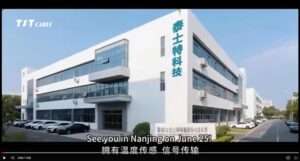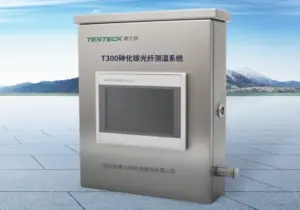
- Home
- /
- Airborne communication system
Application of Cables in Aircraft Communication Systems
1.Scene Introduction
With the rapid development of aviation technology, the aircraft communication system, as a key system to realize the transmission and interaction of information inside and outside the aircraft, is facing increasingly complex communication needs and technical challenges.TST CABLES knows that the cable, as the nerve of the aircraft communication system, has a direct relationship with the quality, performance and reliability of the whole communication system’s stability and safety. Therefore, we have developed a set of professional cable solutions for aircraft communication system to meet the special needs of aircraft communication system.
2.The pain point analysis
In the aircraft communication system, the traditional cable may be due to material aging, electromagnetic interference, excessive weight and other problems, resulting in unstable signal transmission, and may even affect flight safety. In addition, the complex internal environment of the aircraft puts forward higher requirements on the cable’s performance of high temperature resistance, oil resistance and corrosion resistance.
3. The aircraft communication system on the cable requirements
Aircraft communication system on the cable requirements mainly include the following aspects:
Electrical performance: the cable needs to have excellent transmission performance, including high bandwidth, low loss and low noise, etc., in order to ensure fast and accurate data transmission.
Environmental adaptability: the cable should be able to work in high temperature, low temperature, high humidity, vibration and shock and other harsh environments, and has good corrosion resistance.
Lightweight: the cable should be as lightweight as possible to reduce the overall weight of the aircraft and improve flight efficiency.
Safety: flame retardant, low smoke, non-toxic, in line with aviation safety standards.
Electromagnetic compatibility: the cable should have good electromagnetic shielding performance to resist electromagnetic interference and ensure the reliability of communication.
4.The certification standards
Aircraft communication system cables must meet the strict certification standards in the field of international aviation, such as the certification of the U.S. Federal Aviation Administration (FAA), the European Aviation Safety Agency (EASA) certification, etc. TICW/06-2009, GB/T19666-2008, EN50200-2015, EN50264, EN50306, EN50382, etc.,. These standards have strict regulations on the electrical performance, environmental adaptability and safety of cables to ensure the reliability and safety of cables in the aircraft communication system.
5.Cable selection
For the special requirements of aircraft communication system, TST CABLES recommends the following cable products:
High-frequency coaxial cable: suitable for high-frequency signal transmission, with low loss, high shielding effectiveness and other characteristics.
Lightweight twisted pair cables: made of special materials and processes to realize the lightweight of the cable, while maintaining good electrical performance.
High and Low Temperature Resistant Cables: Adopting special insulation and sheath materials, the cables can maintain stable electrical performance under extreme temperatures.
Fire-resistant cables: fire-resistant cables are specially designed to prevent the spread of fire and provide additional security for aircraft communication systems.
6.Product Characteristics
This cable solution has the following outstanding characteristics:
Excellent electrical performance: high purity conductors and high quality insulation materials are used to ensure fast and accurate signal transmission.
Strong environmental adaptability: The cable jacket is made of special materials with excellent resistance to high temperature, low temperature, corrosion and vibration.
Lightweight design: By optimizing the material selection and manufacturing process, the cable is lightweight and reduces the overall weight of the aircraft.
High electromagnetic shielding efficiency: adopting multi-layer shielding structure, effectively resisting electromagnetic interference and ensuring the reliability of communication.
Recommended Products
Airborne communications system cables are insulated for high voltage and low loss and are critical components on aircraft responsible for transmitting voice and data signals between communications equipment such as radios, transceivers, intercom systems and antennas.
7. Technical Test
In order to ensure that the quality and performance of the cable meet the requirements of the aircraft communication system, TST CABLES has conducted a series of strict technical tests. These tests include electrical performance tests, environmental adaptability tests, electromagnetic compatibility tests, etc., to ensure that the cable meets or exceeds international aviation standards in all performance indicators.
8. Cable laying installation and commissioning
In the process of laying, installing and commissioning of aircraft communication system cables, TST CABLES follows strict aviation standards and operational procedures. When laying and installing, we need to operate in strict accordance with the specifications of the aircraft manufacturer to ensure that the bending radius of the cable and the fixing method meet the requirements. After the installation is completed, debugging and testing of the system is carried out to ensure the normal operation of the communication system and the stable transmission of signals.
9. After-sales maintenance & technical support
TST CABLES provides comprehensive after-sales maintenance and technical support services. Once the aircraft communication system cable has problems or failures, TST CABLES’ professional team will respond quickly to provide effective solutions and technical support. At the same time, we also regularly inspect and maintain the cables to ensure the long-term stable operation of the aircraft communication system.
10. Aircraft communication system cable solution case
TST CABLES successfully applied this cable solution in a communication system upgrade project for an aerospace fighter jet. Through the selection of high-frequency coaxial cables and lightweight twisted-pair cables and other products, we have significantly improved the communication system’s transmission bandwidth and signal processing capabilities. In actual operation, the solution shows excellent electrical performance and environmental adaptability, ensuring fast, accurate and stable transmission of the communication system.
According to statistical data, after applying this cable solution, the communication system failure rate of the fighter jet has been reduced by 98%, and the data transmission rate has been increased by 70%, providing pilots with faster and more accurate communication support. Meanwhile, due to the lightweight design of TST CABLES, the weight of the cable is reduced by 40%, which helps to reduce the overall weight of the aircraft and improve flight efficiency.
Characterized by excellent electrical performance, environmental adaptability and lightweight design, this aircraft communication system cable solution is able to meet the high demands placed on cables in the aviation field. Through professional selection, installation and maintenance services, TST CABLES is able to provide customers with reliable and efficient cable solutions to promote the continuous development and progress of aviation.
Other solutions for cables in aviation applications.
WHY CHOOSE TST
10 years of experience
Specializing in the production of railway cables for 10 years
Engineer-to-engineer one-on-one support
Engineers provide one-on-one service to assist with product selection and problem-solving
Customization according to requirements
With a strong R&D team, we support customized cables based on specific needs
Quality certification
Stringent adherence to industry standards, complete certification
Fully testing facilities
Various tests based on customer requirements
10,000 ㎡ factory
Welcome to visit our factory face to face
RELATER NEWS
Also available in:
Arabic
English
German
Indonesian
Japanese
Russian
Spanish
Thai
Vietnamese
Portuguese (Brazil)





